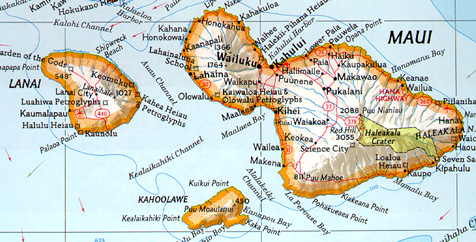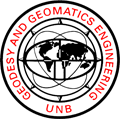An Introduction to Mapping

The art and science of mapping were developed to satisfy a basic human curiosity of wanting to explore the world. Computer technology has drastically changed the way we make and use maps. A couple of our faculty members have gotten together and written an interesting introductory article on the subject.
Computer Mapping for the Classroom
Y.C. Lee and John McLaughlin
The art and science of mapping were developed to satisfy a basic human curiosity of wanting to explore the world. Maps were produced to capture the essence of geographical features on paper. Other map-like products, such as globes and three-dimensional models, were also created to provide more realistic representations.
Maps serve very useful purposes. They are depositories of geographical information and they are tools for decision making. Maps, therefore, have always been valuable products for the public. As a result, Canada, like most countries, has well-established programs for national and regional mapping. Here in New Brunswick, the N.B. Geographic Information Corporation (NBGIC) has the mandate to maintain geographical information and to promote its use.
Different techniques have been developed over the ages for mapping. The objective of mapping, however, remains unchanged, and that is to record geographical information. The effects of technology on mapping have been on methods of collecting, storing, using, and presenting data.
Conventional maps are not always suitable for analysis. First of all, they cannot provide the highest possible accuracy because of the physical limit of the paper and the amount of information to be shown. In order to make maps legible, we must sometimes perturb the location and size of the features. Secondly, manual map analysis is a very slow process. Looking for a particular feature requires a visual scan of the entire map unless the user is given some approximate idea of where the feature might occur. Analytical functions such as finding the length of a highway and the area of a province often demand painstaking efforts to measure and compute by hand.
Computer technology has drastically changed the way we make and use maps. Computer mapping is the production of maps with the help of computers. The final results are stored digitally and can then be processed very efficiently by computers. The computer not only provides practically unlimited storage space, it also allows the storage of the map completely separate from the display of it. Thus, geographical data can be stored in its highest accuracy digitally. When these data are eventually shown on a computer monitor in a map-like form, cartographic enhancements will apply to produce the most effective visual image without affecting the original accuracy.
The real power of computer maps comes from the ease in obtaining and analysing data. Computers are very efficient search and computational tools. In order to harness the power provided by computer maps, very sophisticated computer systems called geographic information systems have been developed. Often called GISs, these systems can be used to input, store, analyse, and present geographical information. Canada has been a pioneer in GISs research and development. The first GIS in the world, the Canada Geographic Information System (CGIS), was developed by the Government of Canada in the 1960s. New Brunswick has also been a leader, producing the Computer Aided Resource Information System (CARIS), a major Canadian GIS whose design and development was initiated in the Department of Geodesy and Geomatics Engineering at the University of New Brunswick.
Over the last decade, the number of commercially available GISs software systems has increased from a few to over a hundred. GISs have now become major tools for both mappers and users of geographical information. A major push in the application of GISs was provided by the forestry industry in the early years. More recently, it has been used by town planners, geologists, farmers, biologists, and civil engineers, to name a few.
This technology has spawned a multi-billion dollar industry worldwide. It allows us to uncover the wealth of information provided by maps and the different ways they can be used to solve important problems with a degree of efficiency that was previously impossible. There is no reason why this technology will not develop to the point that GISs become household products. Primitive consumer GISs are already appearing in the form of electronic maps on automobile dashboards.
As teachers and educators, we can hardly overlook the impact of this new technology on the next generation of students. This new technology has changed the role of surveyors and mappers in the information era and has created new career opportunities. The traditional emphasis on the collection and presentation of geographical data in the surveying profession is adjusting to include data management. With this evolution, information science has become a new core.
There are several ways teachers can prepare students for these changes:
- Expose them to the wealth of geographic information available in the province and its applications.
- Present to them the new career opportunities and the qualifications required.
- Let them use geographic information systems as a teaching tool.
- The NBGIC (457-3581) which is a curator and user of topographic and property information.
- The Timber Management Branch of the Department of Natural Resources and Energy (453-2516) which is a curator and user of forest resources information.
- Universal Systems Limited (458-8533) which is the developer and vendor for CARIS.
- The Department of Geodesy and Geomatics Engineering, University of New Brunswick (453-4698) which has long been involved in GIS education.
Many of the GISs used for production purposes are fairly expensive, in the order of thousands of dollars. There are a number of very affordable systems, however, that run on personal computers. Some even provide demonstration copies free of charge. One such GIS on a PC compatible is called the MapBox™ from Decision Images Inc. of New Jersey (609-683-0234). The same company also supplies free demonstration copies of a data input software called Roots™ that runs on either a PC or a Macintosh computer. Both demonstration packages include data that can be used immediately. Several other companies supply GISs or their demonstration versions for under $200.
The Department of Geodesy and Geomatics Engineering at the University of New Brunswick has been at the heart of this revolution. In its education and research programs, the Department places heavy emphasis on computer science, information technology, and applied geography. It also provides a rich variety of career opportunities both at home and abroad for students interested in developing and using these new technologies. Geomatics is still largely an unknown field, but with your help we plan to change that.


